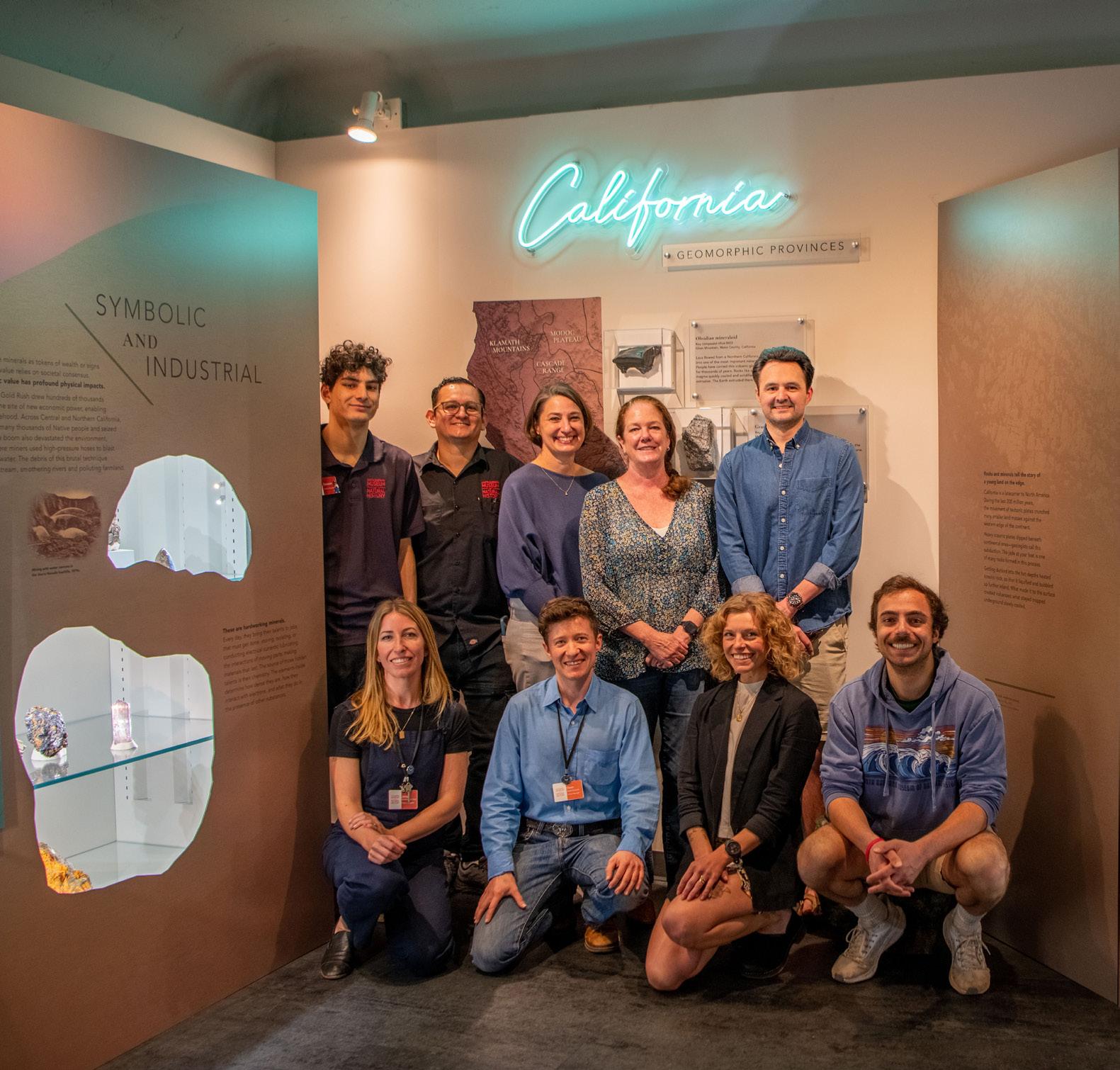
2 minute read
MINERALS COME TO LIFE
Exhibits team rocks old hall with new chemistry
Have you visited our new mineral exhibit? In addition to oodles of crystals, the room has a new feel and fresh interpretation. The old hall was emptied and closed in preparation for the dazzling summer 2022 exhibit Rare Earth in Fleischmann Auditorium. Setting a high bar for showmanship, Rare Earth centered on stunning specimens on loan from noted mineral collector Rob Lavinsky, Ph.D.
Advertisement
After Rare Earth closed, an interdisciplinary team reinvented the Museum’s small-but-mighty permanent exhibit, creating an inviting space that provides abundant and approachable scientific context for the 100 choice specimens handpicked by Dibblee Curator of Earth Science
Jonathan Hoffman, Ph.D.
While providing information about minerals’ relevance to daily life and regional identity, the new interpretation still keeps science—especially chemistry—at the center.

Dr. Hoffman collaborated with other geologists on staff to situate the study of minerals in space and deep time, instilling a greater appreciation not only for minerals, but for the dynamic natural forces that generate them. Taking a cue from the mineral evolution approach pioneered by Robert Hazen, Ph.D., and other prominent mineralogists, the exhibit leads with the startling fact that the solar system began with only 60 minerals, whereas over 6,000 are known on Earth today.
Exhibits Designer Jenna Savage Davis, M.F.A., designed the look and feel to avoid the glass-case-in-astore feeling of other mineral exhibits. Organic forms and panoramas mask the cases, evoking the fact that minerals come from our planet’s landscapes, not jewelry stores. Highly adjustable LED lighting makes another major improvement over the old hall.
The team kept guest favorites—memorable specimens, the interactive fluorescent minerals, and the Dreier Mine—enhancing them to suit the new look. Longtime local Museum collaborators provided key skills: The Environment Makers embellished key parts of the space with naturalistic rock textures and colors, and S.B. Forge handwrought iron mounts for select specimens.
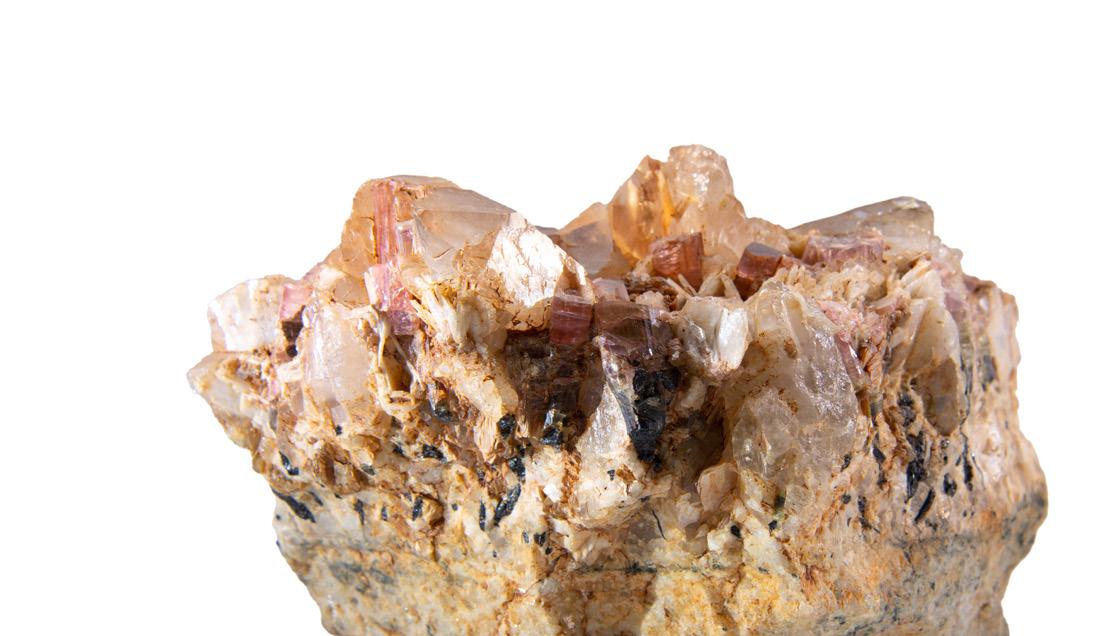
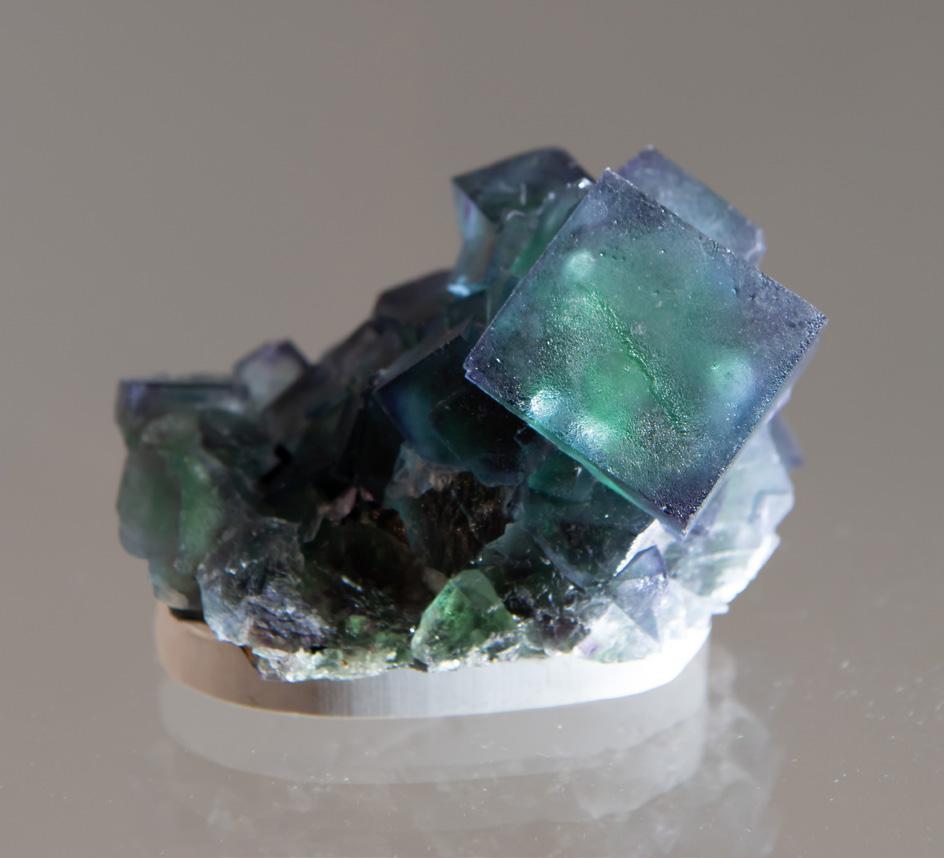
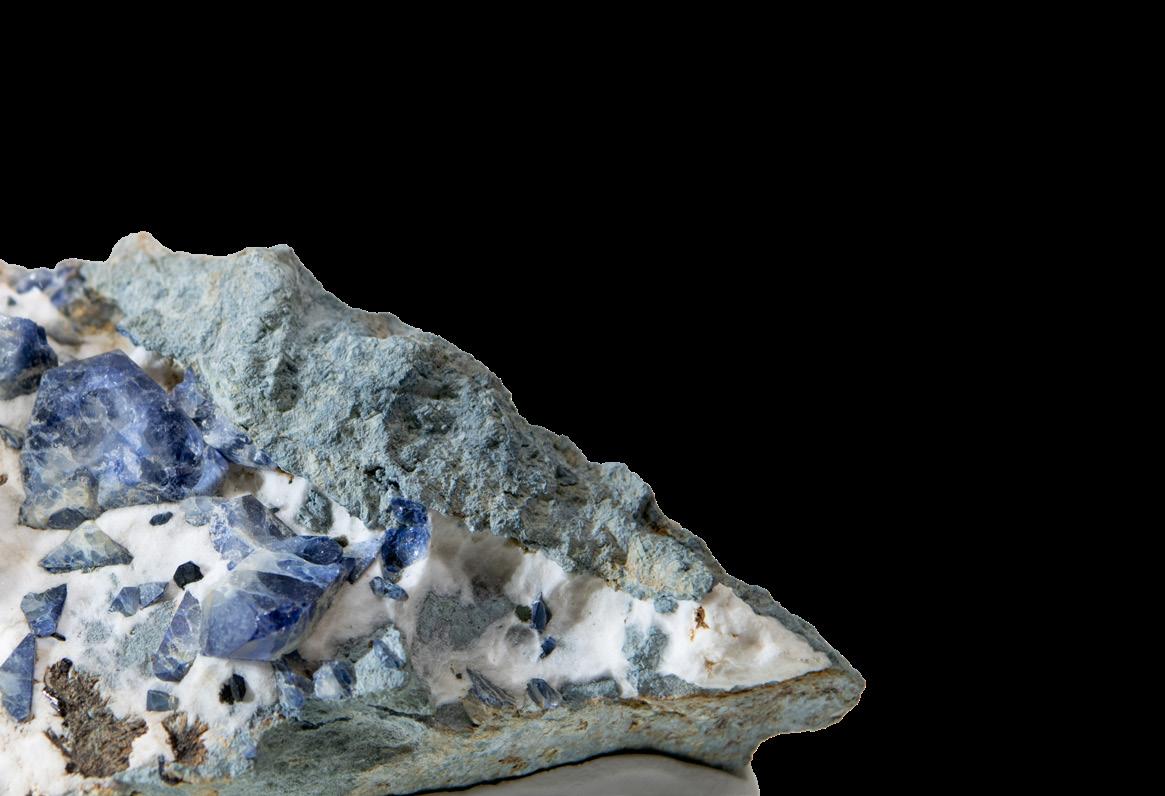
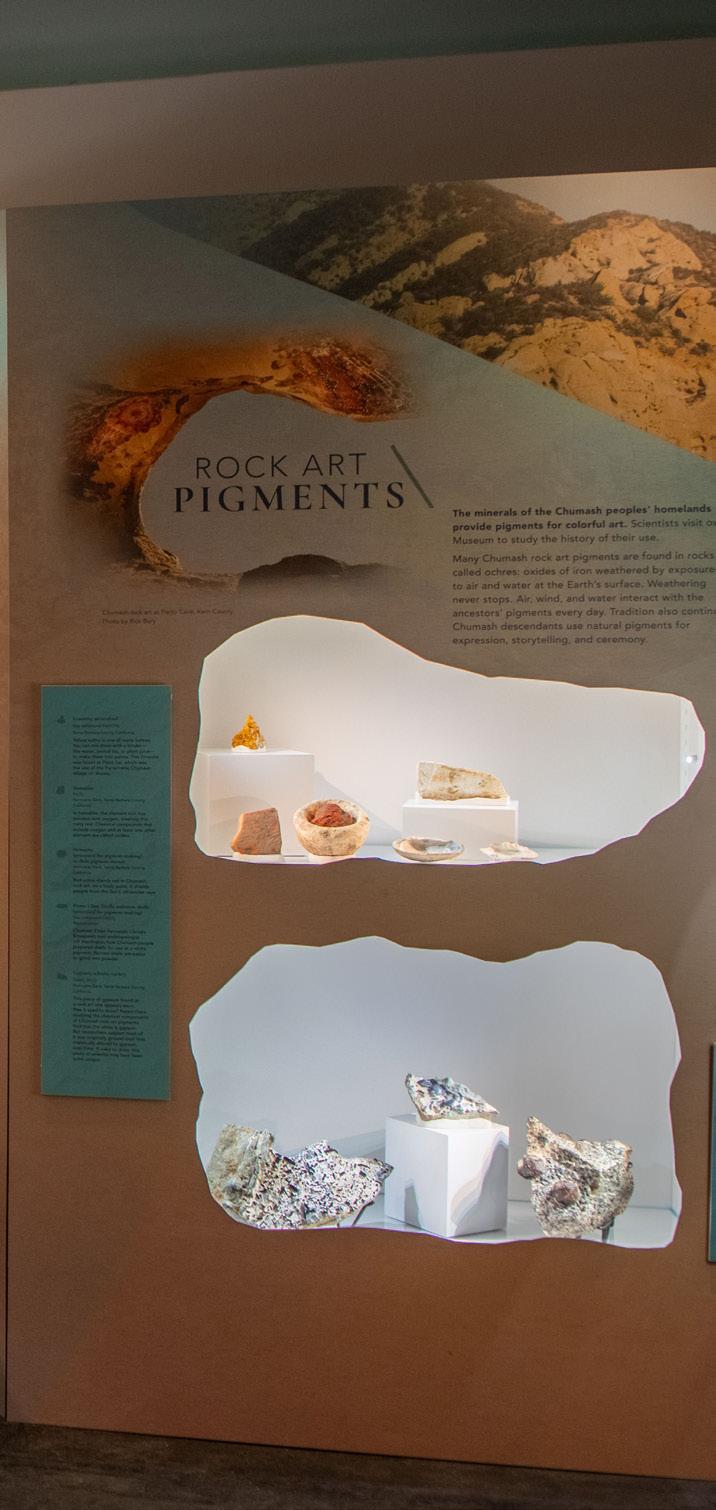

The lion’s share of skilled craftsmanship was performed by Exhibits Tech Jimmy Friery and Exhibits Lead Francisco Lopez, who did everything from handcrafting custom specimen supports to hooking up the neon “California” sign highlighting our state’s geomorphic provinces. This exhibit was Lopez’s swan song as a full-timer at the Museum. After more than a decade as the team’s hands-on problem solver, he’s relocating with family to Utah.
“It’s been a great 10 years and 10 months, and I’m glad for this to be my last hurrah,” says Lopez.
“To redo an entire hall with fresh ideas, that’s a challenge. The reward is when you get to open the exhibit and see the families enjoying what you created. It’s worth all the long hours and hard work.”
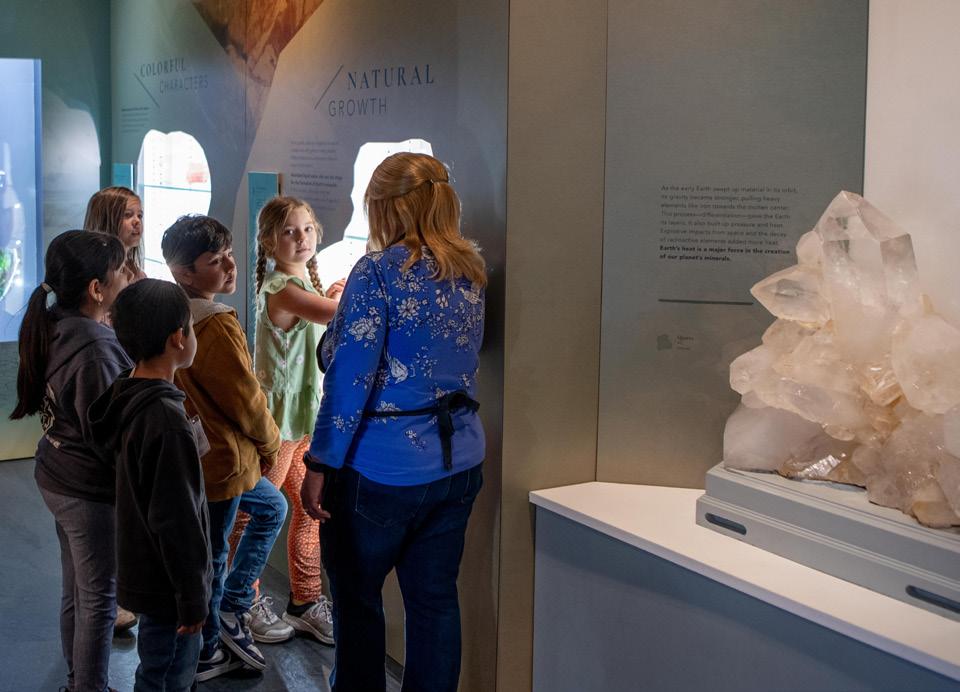
“It’s a privilege to work with so many talented people who can pull it together,” says Amy Carpenter, who leads the Exhibits Department. Hoffman elaborates:
“From room layout to graphics to narrative to fabrication, every member of the team generated great ideas and skillfully implemented them.”
This hall’s transformation was made possible by









